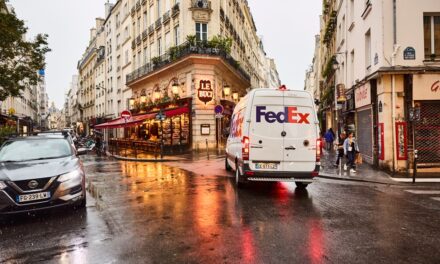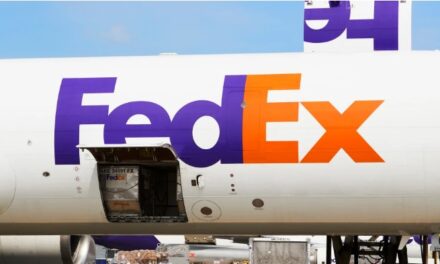
The ongoing challenge for e-tailers – A packages last mile
During the recent holiday season, US consumers held back from frenzied purchasing over the Internet. Still, according to Giga Information Group, online Business-to-consumer (B2c) sales totaled some $20 billion in the US last year, and they will reach $52 billion during next year. The total number of US home delivery transactions will explode to a staggering two billion transactions by 2002, according to consulting firm A.T. Kearney. The National Retail Federation predicts that the number of packages shipped daily to residential customers will rise nearly 120 percent over the next three years, with much of the growth from e-commerce.
Surviving Internet retailers, or ‘e-tailers’, were better prepared to handle high volumes than in when botched orders and delayed shipments were frequent.
The intricate details of electronic ordering are being refined. The pick-and-pack and loading processes are being automated.
But the last mile’ or final stage of fulfillment that ensures a package gets from a local hub or regional distribution center to a consumer’s doorstep is an ongoing challenge, though. Some e-fulfillment companies have realised that they cannot realistically go the last mile themselves.
SameDay.com is one of these. It dumped
its small fleet of vans for home deliveries and partnered with national same-day courier Velocity Express, to help with urgent deliveries for select customers. Same Day says that it is now more selective about the B2c markets that it wants to serve. Moreover, it is also becoming a Business-to-Business (B2B) company, by offering its warehouse and fulfillment systems to other e-tailers, which want to outsource all their physical handling. These include Quicksilver (which sells wave surfing gear) and eFanshop, where fans of professional sports go to buy items branded with the insignia of their favourite teams.
Same Day’s software allows e-tailers to compare their current consumer orders against inventory levels. In some cases, the consumer can view whether an item is in stock on the web-site. “The customer can then decide, I don’t want to wait three days, I’ll think I’ll go the store,” says Erin Mills, marketing manager at Same Day. Regarding delivery, ‘there’s clearly a cost for etailers who want to offer additional customer service such as same day or tracking,” notes Mills.
BYPASS
eFAN Shops is using Same Day’s Dallas warehouse and warehouse management system (WMS). The WMS is linked to eFAN’s extranet system. According to Collin Moore, director of operations at eFAN, this link is critical because the extranet houses the supply chain data. The suppliers to eFAN are notified of an order by this extranet.
A minority of eFAN’s product line such as commemorative plates and table lamps bypass the Dallas warehouse, and are drop-shipped directly from vendors to the customer. A further complication is that eFAN generates orders from not only its own website, but also from the websites of partners such as MSNBC and some daily newspapers. By this means, the fans can shop instantly while reading the sports section online.
Moore claims that despite having opened for business only late last year, eFAN successfully survived its first holiday shopping season. Upon placing an order online, customers immediately receive a confirmation e-mail and a website address at which they can trace their order. ‘Five different items may come from five different vendors. Its all updated on our extranet,” Moore says.
eFAN is typical of e-tailers today: 24 hours-per-day, seven-days-per-week customer service via e-mail and toll-free 8oo telephone numbers. However, it has also invested in a ‘live chat” option so that customers with questions can instantly connect online with a representative, who will answer questions and transmit product images, etc.
TRANSIT TIME FIRST
FedEx is eFAN’s main carrier for shipping but it also uses UPS. Moore says that customers designate their preferred transit times first, and the system then selects a carrier based on whether ground, overnight air, or second day air is required. eFAN doesn’t offer any same-day deliveries yet. Moore notes that efficient returns are also important. eFAN uses FedEx the Net Returns service, which dispatches a pickup vehicle to the customers’ home. All returns are processed at the Dallas warehouse.
Major retailer Toys’R’Us decided last year to drop its own e-fulfilment development in favour of linking with the giant e-tailer Amazon.com. For the 2000 holiday shipping season, Amazon’s US website generated more than 30 million shipments, a one-third increase over the previous year. According to Amazon’s international spokeswoman Margaret Dawson, the company’s continued growth proves that consumers do want one stop shopping from books to toys to power tools. ‘We make it easy for the customer to find the item, order it, and then track it. The whole focus is to make it a pleasant experience,” she says.
In addition to expanding its distribution centers (DCs) in the US, Amazon also opened its fourth global DC in Ichikawa, Japan, adding to those in the UK, France and Germany. Amazon now operates websites in English, French, German and Japanese languages, and can support a total of 14 languages, Dawson says.
For US domestic orders, Amazon typically offers shipping by UPS and the U.S. Postal Service (USPS). The same carriers are offered for orders placed in the US for delivery elsewhere (though only music, books, DVDs and videos can be sent abroad).
To handle shipments generated overseas, Amazon has aligned with various carriers in major regions such as Deutsche Post in Germany and the Post Office in the UK. “In Japan, we have a unique logistics agreement with Nippon Express where we jointly manage our DC. Nippon is the leaseholder of the DC and employs most of the workers, but it’s our technology and infrastructure,” Dawson says. DHL carries most of the sales generate in Japan.
Reducing call center volumes
Amazon plans to offer more products internationally. With such a holiday peak in shipments, how could they all be successfully delivered? To avoid mistakes of previous years, Amazon says that it started planning with UPS in January 2000. UPS spokesman Steve Holmes says that the carrier made volume allocations with its network based on Amazon’s projected forecasts. “We worked with them on positioning inventory around the country, so that Amazon could use our air and ground network to reach the customers in the best time and most cost efficient way.” In addition to Amazon, UPS queried its other top 1,000 customers long before December about expected holiday volumes, according to Holmes.
The USPS also came to the rescue in delivering orders even on Christmas day itself. Rita Peer, media relations representative at the USPS: “Christmas Eve fell on a Sunday this year, but most post offices delivered priority mail on both Christmas Eve and Christmas Day to be sure all holiday packages were in the hands of customers.”
Like he USPS, UPS continues to deliver more packages to more residences to keep pace with e-commerce. About 20% of the 13.5 million deliveries the UPS makes each day in the US, are to the home. Most of them are by the lowest-cost UPS ground service, which takes up to seven days coast to coast. UPS has improved its Returns on Web program that allows the consumer to print out authorized shipping labels on regular paper. “This reduced call center volumes at one of our customers by 40% and cut down the average return process time to four days from two weeks,” Holmes says.
Refunding Charges
The economics of home delivery are not for the faint hearted – which is why many carriers including majors like Airborne Express rely upon the USPS for the last mile. FedEx, however, launched a Home delivery service last March, which uses the growing coverage of its low cost surface delivery option, FedEx Ground. The carrier claims that it has already signed 2,000 e-tailers, catalogues and other to the Home Delivery service
One of them is niche e-tailer Ahh! Products, which sells bean bag chairs. Company owner jade Nguyen says she switched to FedEx because of the high volume, charging penalty imposed by the UPS for its Ground Service. All three sizes of bean bag chairs need oversize packing, but weight less than 20 lbs. FedEx Ground charges Nguyen for 30 lbs, but this still represents a saving.
“Customers are very happy,” she says. “We ship the next day after payment is received for most items. If FedEx Ground fails to deliver within the specified time, they refund the charges.” The service guarantees shipment from the Virginia-Based company to the West Coast within five days.
FedEx Ground makes daily pickups Monday to Friday at Ahh! Products and some customers receive deliveries from growing legions of FedEx Home Delivery vans. Nguyen says she appreciates the guaranteed service offer, but is not using the carrier’s premium services such as deliveries at appointed times because these are not yet available across the whole country.
Betsy Momich, spokeswoman at FedEx Ground, acknowledges that the premium Home Delivery services must be more widely available before e-tailers will market them. But they can be expensive: a delivery by appointment costs $30 and even a signature costs $3. Evening and day-certain delivery also costs more.












